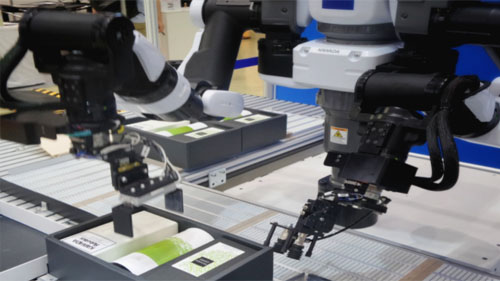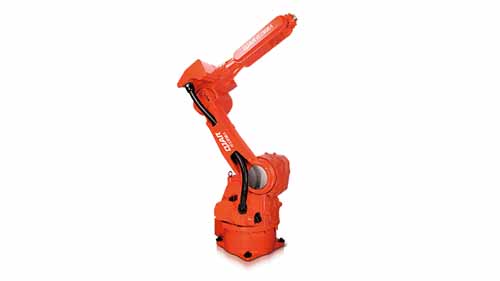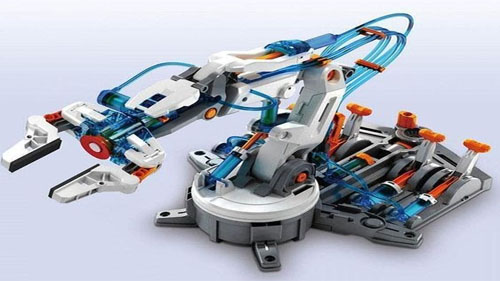
Source: Unsplash
Automation has become the backbone of manufacturing in the modern world, and anyone not subscribed to the use of industrial robots is being left behind. Although it has caused disruptions in the employment sector, there’s no denying the benefits that automation has brought to the table in the last decade. There’s more safety on work floors, increased production, and high precision in the overall quality of the goods, and the one type of robotic assets that have been driving this revolution the most is the hydraulic robotic arm kit.
We are going to explore what hydraulic robotic arms are all about, how they work, the advantages they bring to the manufacturing space, and their place in the future. If you have been thinking of automating your manufacturing plant, then this would do you good.
Table of Contents
What Is an Industrial Hydraulic Robotic Arm?

A hydraulic robotic arm is an extended mechanical appendage that is automated and run by a special executable program that allows it to be used to perform some functions in a manufacturing plant. These hydraulic robotic arms come in varying sizes, and each is designed for specific functions that range from palletizing, welding, pick and place, packaging, among many other roles. Some of the features that make them such a good investment include the following.
They are flexible and can be repurposed for other roles at a moment’s notice
They are easy to operate with most of their functions automated
They are easy to maintain
How Does a Hydraulic Robotic Arm Works?
The principle behind hydraulic robotic arms is very simple, although many assume that it is too complicated based on the fact that they are robots. The only sophisticated part would be the programming that runs the entire structure. But on the mechanical fronts, a hydraulic arm is just another advanced machine with moveable parts. The hydraulic system of a robotic arm is made of 5 main parts that include the following.
A Reservoir: This is a tank or a container that holds the hydraulic fluid necessary for the movement of the important parts that trigger the robotic arm into action. It has to be airtight and well sealed to avoid spillages since the arm will move in many directions at very fast speeds.
A Hydraulic Pump: This is what moves the fluids throughout the system to all the parts for operations to be possible. It is the heart of the entire system that converts the mechanical energy and motion into the very necessary hydraulic fluid power.
An Electric Motor: This is the power that provides the energy needed to run the hydraulic pump. Depending on the needs of the hydraulic robotic arm, it can be fast or moderately slow.
Valves: These are important components set out in strategic places all through the system with the main aim of controlling the flow of liquids and reducing the pressure from the system when the need arises.
The Hydraulic Cylinder: This is the chamber that houses most of all these processes. It converts the hydraulic energy back into mechanical energy, keeping the system in an efficient loop of power generation and usage.
There are many types of hydraulic robotic arms, and they all may look different, but the working mechanism is the same. The hydraulic system begins by pumping the hydraulic fluid, pushing it throughout the system to create the necessary fluid power. This hydraulic fluid is then passed through a number of valves which help regulate the speed, pressure on top of preventing any fluid from flowing backward. This fluid enters the cylinder, and the hydraulic energy is converted back to mechanical energy that is then applied to the various components, making the hydraulic robotic arm work. The bigger the robotic arm, the more sophisticated the hydraulic system, but the principle remains the same throughout the entire process.
Advantages of Hydraulic Robot Arms

Source: Pinterest
There are many advantages that the hydraulic robotic arm system brings to the table. Every manufacturing plant around the world is now automotive their production, and this has a number of benefits that include the following.
They are Faster
It is impossible to quantify the amount of work and the speed of handling things that a hydraulic robotic arm can accomplish when compared with what a human worker can do. These robotic arms are faster and more accurate, and this makes it easy for them to handle tasks at blinding speeds as they don’t have to adhere to safety rules like human beings; as long as they are given ample space to operate, they will blast through any kind of work without making any errors. Those that work alongside humans are fitted with sensors that are able to make them avoid colliding with human workers or with other machines, further improving their efficiency without putting any dent in their speeds. Automating a manufacturing process with hydraulic robotic arms is a sure way of ensuring your profits double up.
Reduced Costs
The cost of hiring and training human workers to handle just a single task can run into thousands of dollars, and this is only viable if the manufacturing plant is big and has a huge volume of work. On the other hand, a hydraulic robotic arm doesn’t require any training, all it needs is an executable command, and it will start handling work like it has been doing so for years. Robotic arms also don’t experience fatigue like human workers, they can work for days without stopping even for a moment, and this means production can continue round the clock. They are also not prone to injury; hence the need for compensation has been eliminated significantly; the only drawbacks one has to contend with are maintenance ones, but those are even overshadowed by the profits that automation brings in.
Reduced Errors
When you factor in fatigue and distractions, it is easy for human workers to make errors that may end up affecting the quality of the final products. This is never intentional; the fact of the matter is the human body has a limit, and once that threshold has been breached, it’s downhill from that point. Hydraulic robotic arms, on the other hand, are precise and accurate, with very little room for errors. They are able to handle repeatable tasks without getting tired or bored. This has not only increased the production rates and speeds, but the quality of the final products has risen significantly. It would be impossible to tell two products that have been made by a single hydraulic robotic arm apart.
Versatile
Hydraulic robotic arms are not limited to a single task. They can be repurposed and reprogrammed to handle another task in a different section of the manufacturing line really fast. A hydraulic robotic arm that handles sorting today can be transferred to the palletizing section and given new instructions, and it will immediately start working as nothing has changed. This makes them cost-effective, considering how expensive these arms can be. You will be justified spending thousands of dollars on a hydraulic robotic arm, knowing fully well that it could serve all your needs at once without the need of adding extra human hands.
What Is the Use of Industrial Hydraulic Robotic Arm?
A hydraulic robotic arm is designed for a number of tasks, as we have already mentioned. Most of them are even flexible enough to be able to do more than one thing on the manufacturing floor. Some of the most common uses include the following.
Pick and Place Robotic Arm: This is the process where heavy loads, be it raw materials or finished products, are picked by hydraulic robotic arms and placed in storage units or loaded into sorting machines. These loads are usually too heavy for human hands but easy work for a strong hydraulic robotic arm.
Welding Positioner: Thanks to their nimble effector hands, hydraulic robotic arms are precise enough to handle delicate functions like welding with ease. They are also better as they do uniform work that ensures the end products are identical in all aspects especially in the energy industry where containers have to be leak proof.
Assembly Robot: Manufacturing sectors like the automotive have no choice but to make use of hydraulic robotic arms since they deal with heavy parts that could break a man’s back. Only hydraulic robotic arms have the capacity to handle the assembly of these parts without dropping the ball.
Painting robot: Applying a coat of paint on products like cars is not an easy job, and when done by human beings, there’s always the risk of the work being uneven and taking too long. But where hydraulic robotic arms are involved, the process is much faster and the layer applied is more uniform.
Conclusion
The future of robotic arms with hydraulic systems is already sealed in stone; automation is the only way left for manufacturing and anyone not working towards that risks losing out on the big pie a decade down the road. There are many other robotic automation systems besides hydraulic robotic arms that are also changing the manufacturing landscape that should be considered in your automation plans. If you ever find yourself in need of expert advice or the best hydraulic robotic arms in the market, feel free to get in touch with us, and we will help you achieve your dream.
